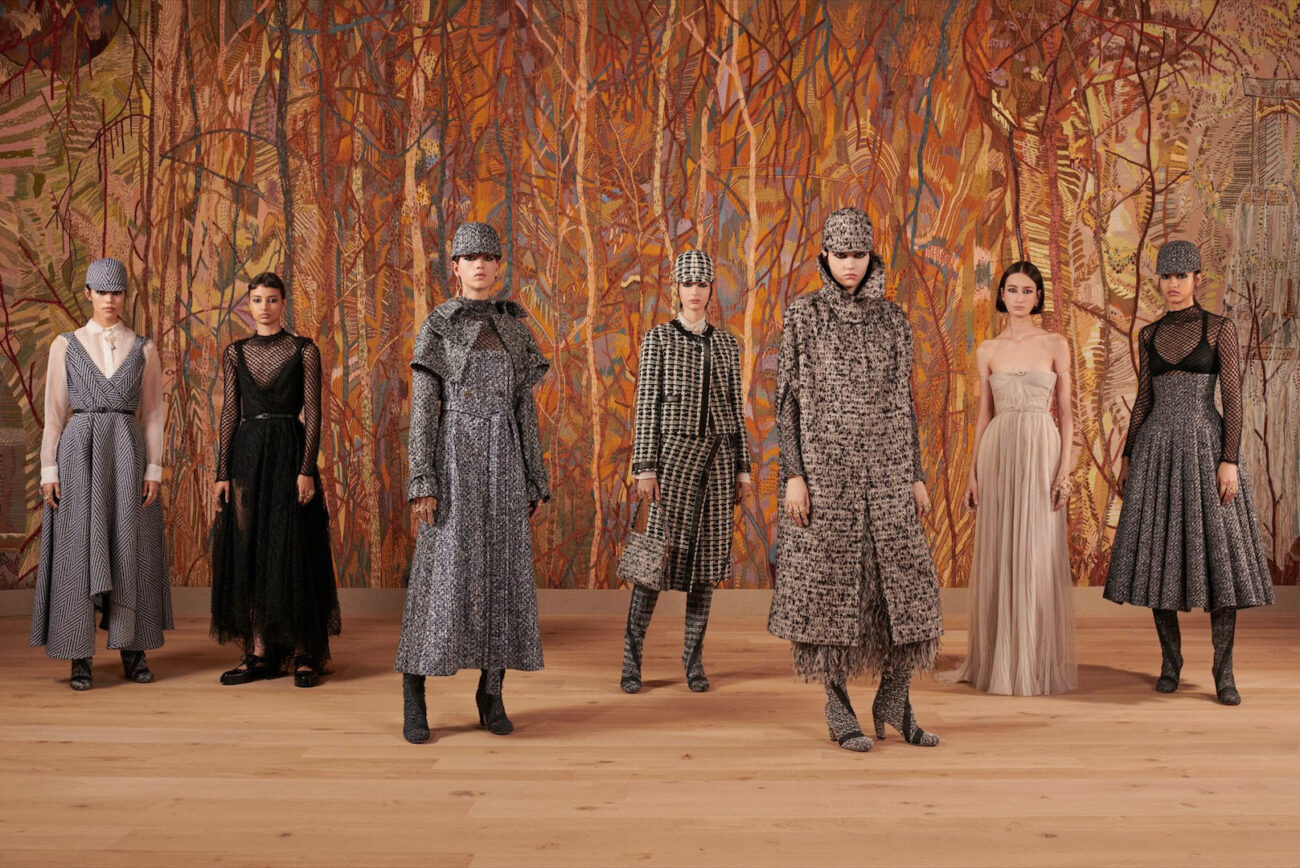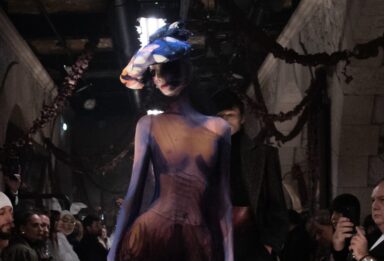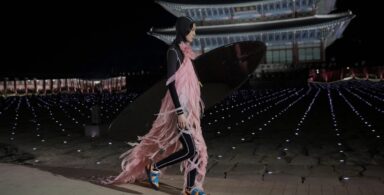For the AW 2021 haute couture collection, Maria Grazia Chiuri focuses on textile experimentation and emphasises the moment when the clothes are made. The work “Chambre de soie”, created by French artist Eva Jospin, is the frame and “Treads of Life” by Clare Hunter provides the inspiration for the collection
Text by: Domenico Costantini
This Dior haute couture autumn-winter 2021-2022 collection, imagined by Maria Grazia Chiuri, is set in a singular context. Returning to “presence”, the focus must be shifted towards a haptic materiality. Translating this materiality into the virtual age also means reinterpreting embroidery: not as a decorative ornament but as a substance linked to the senses of sight and touch. The materiality of the fabric becomes form, the subversive language of embroidery is expressed through a project that becomes a performative action. An energy comparable to poetic pleasure, halfway between style, movement and attitude. A series of pieces that find the possibility of unprecedented warp and weft structures in textile research – a series of variations of checks, tweeds, textures and different sizes in black and white. Before talking about the inspiration, a digression in time is in order. The Dior fashion house was born out of an agreement between a designer, Christian Dior, and a textile businessman, Marcel Boussac. Maria Grazia Chiuri approaches the matter from a different angle, with a feminine approach that is her unmistakable signature. In fact, she was inspired by the book “Threads of Life” by Clare Hunter, a textile artist and curator.
The book is a chronicle of identity, protest, memory, power and politics told through the stories of women who, over the centuries and across continents, have used the language of sewing to make their voices heard, even in the most desperate circumstances. The book gave Chiuri a critical awareness of the essential value of weaving and embroidery.
The work Chambre de soie, created by French artist Eva Jospin, serves as the exhibition’s enclosure. The walls are adorned with embroidery on a scale of 1:1, alluding to the Sala dei Ricami in Palazzo Colonna, decorated with Indian-style tapestries.
This creation is a scene, a precious backdrop for magnificent gowns with their plissé, their train, their hand-woven chains drawing patterns on the body, in colours dear to Monsieur Dior such as dusty blue or nude. Chiuri’s message is clear: as in the post-war period, we must get involved, like Penelope in Omero”s Odyssey, we must weave the shroud, an allegory of life, all day long, without ever unravelling it, but continuing endlessly for our autonomy and above all not for Ulysses, because We Should All Be Feminists!



